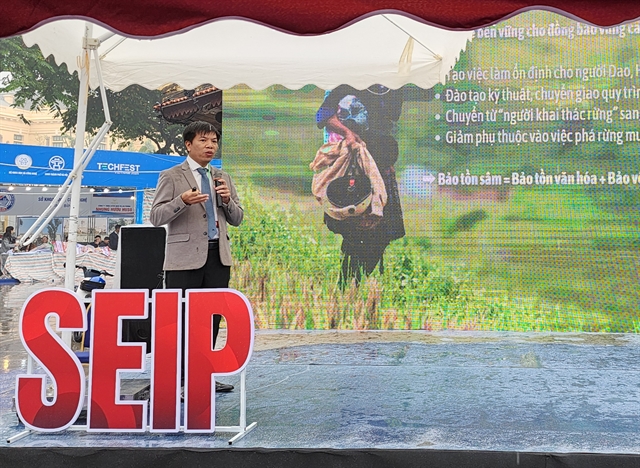 Economy
Economy

Vietnamese exporters must understand and take advantage of the regulations on the origin of goods in dealing with the Republic of Korea’s (RoK) market, said Trần Minh Trang, Deputy Head of Origin of Goods Division of the Ministry of Industry and Trade (MoIT).
 |
| Korean supervisor and Vietnamese worker on a phone production line at a Samsung Viet Nam plant in the northern province of Bắc Ninh. — Photo baodautu.vn |
HÀ NỘI — Vietnamese exporters must understand and take advantage of the regulations on the origin of goods in dealing with the Republic of Korea’s (RoK) market, said Trần Minh Trang, Deputy Head of Origin of Goods Division of the Ministry of Industry and Trade (MoIT).
Trang strongly advised Vietnamese businesses to focus on the procedure and conduct of product origin from Việt Nam to the RoK in order to be eligible for preferential import tax.
She spoke at a conference in Hà Nội yesterday on the implementation of the Korean-Việt Nam Free Trade Agreement (KV-FTA) by the Korea Trade Promotion Corporation (KOTRA) and the KV-FTA Support Centre, in collaboration with the Korean Customs Service.
Another speaker at the conference was Choi Dae Kyoo, Tariffs and Customs procedures expert from the the KV-FTA Support Centre. Choi also stressed the needs for proof of origins of goods for Vietnamese producers to benefit from the KV- FTA, as only proven goods with Vietnamese origin would receive tariff reductions under the bilateral trade agreement.
The conference was aimed to summarise and share peer experience in the application of the KV-FTA in order to better aid both Vietnamese and businesses from the RoK.
Representatives from exporting and importing companies in both countries exchanged questions and answers on matters regarding the origins of goods with representatives from the MoIT at the conference.
According to the rule on the origin of goods, as stated in the trade agreement, goods must meet four basic conditions: being included in the KV-FTA duty structure, being imported from the RoK, being directly transported from the RoK to Việt Nam under the regulations of the MoIT; and meeting the KV-FTA regulations on origin of goods, in addition to having certificates of origin according to regulations by the MoIT.
A year after the official enactment of the KV-FTA and the reduction of 11,679 tariff lines for Việt Nam including the country’s key exports like shrimps, crabs, frozen and canned fish, and 8,521 tariff lines for the RoK, the trade flow between the two countries had been on a steady increase.
In order to achieve the goal of US$70 billion in 2017 in bilateral trade, authorities and agencies will continue to provide businesses with technical and legal support in applying the KV-FTA to daily business.
According to a recent official report by KOTRA, RoK’s year-on-year exports to Việt Nam increased by 11.8 per cent as of October 2016. — VNS




